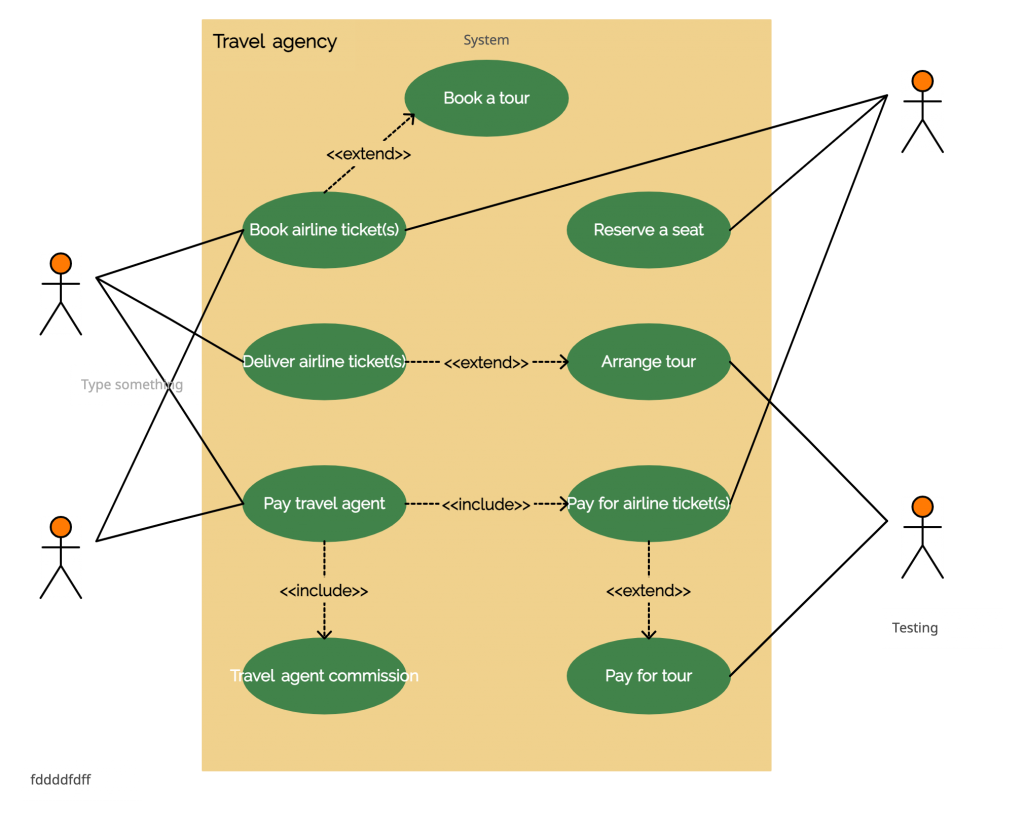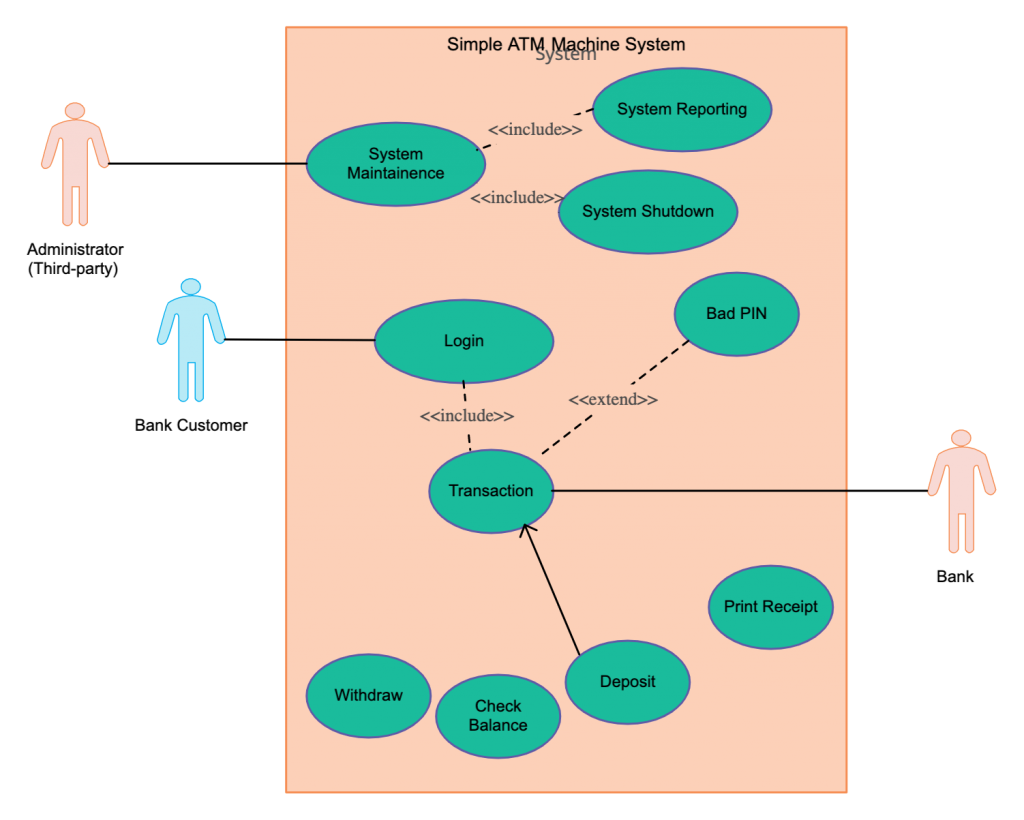How Use Case Modeling Is Used to Describe Functional Requirements
The use case will describe both basic events and exceptional events. The use case diagram is a part of the Unified Modeling Language Rumbaugh Jacobson et al 1999 more commonly referred to as UML.

Use Case Diagram Tutorial Guide With Examples Creately Blog
Then we will show you how to document your requirements using.

. Use cases define the interactions between a user and a product or service. Correspondingly how use cases are related to functional requirements. So I wouldnt generally recommend capturing non-functionals in this way.
Use Cases exist to identify the value a system provides for its users. In other words one Use Case often represents several requirements and several Use Cases often share a common subset of Functional Requirements. It is however a potential title for a Use Case.
Functional requirements along with requirement analysis help identify missing requirements Transaction corrections adjustments and cancellations Business Rules Certification Requirements Reporting Requirements Administrative functions Authorization levels Audit Tracking External Interfaces Historical Data management Legal or Regulatory. A use case starts with an actor or the who which is a particular customer or user of a product or service. WHAT IS USE CASE MODELING The core items of use case modeling are use cases and actors.
Use cases became one of the most widely used approaches for capturing functional requirements for object-oriented systems as part of UML. Use case diagram is requirements elicitation of a software system. In UML requirements are typically captured in Use Cases UC.
These instructions describe how to model NFRs in UML models and topologies together. When the initial task is complete use case diagrams are modelled to present the outside view. Use cases help define the functional requirements or what a product or service needs to do to fulfill the needs and wants of customers.
In this course you will learn how to utilize use case modeling to document functional requirements that can be understood and validated by all project stakeholders including technical staff and business stakeholders increasing the likelihood that. Be careful to make sure the Use Case describes only how the system reacts. There are many benefits to using use cases to document functional requirements.
The UML model editor and the topology editor synchronize NFRs to coordinate the application planning in the UML model with the deployment planning in the topology. The use-case model serves as a unifying thread throughout system development. Use Cases A use case defines a goal-oriented set of interactions between external actors and the system under consideration.
At a minimum a use case should consist of. The Use Case should describe the interaction between the actor and the system - what the actor does and how the system reacts. Use cases represent only the functional requirements of a system.
A scenario is an instance of a use case. A use case should have an ID eg. After defining use cases we define other types of requirements such as non-functional requirements UI.
In this chapter we will first introduce you to UML. A fully specified Use Case is a Behavioural Requirement. It is generally accepted that use cases specified in narrative form also known as use case specifications depict functional requirements.
It is used as the primary specification of the functional requirements for the system as the basis for analysis and design as an input to iteration planning as the basis of defining test cases and as the basis for user documentation. Hence when a system is analyzed to gather its functionalities use cases are prepared and actors are identified. While writing the Use Case dont worry about the implementation of the system or the exact interface it will have.
The functional requirements can easily be used as unit test cases whereas the use cases can be used for user acceptance and integration tests. A basic event is what occurs most of the time in the system. Use cases are a way to document a specific type of requirement called Functional Requirements.
Heres how use cases are related to requirements. Stuff the system does. Use case diagrams are used to gather the requirements of a system including internal and external influences.
Click to see full answer. Other requirements such as business rules quality of service requirements and implementation constraints must be represented separately again with other UML. Functional Requirements can be derived from Behavioural Requirements.
Functional requirements could be collected and documented using different approaches techniques tools and templates. This is because a use case via the main and alternate flows shows how a user interacts with a system in order to achieve a desired result. Use case modeling is a modern approach for describing system requirements by focusing on actors to describe that interaction.
A use case model is the set of all use cases of a system This would be the functional model a complete description of the systems functionality and environment. Eg As a user I want to log out of the system so that nobody can access my account from this browser session. When we document requirements using use cases we use textual description along with use case diagrams.
Where an exceptional event is less likely to happen but could occur. You can model the non-functional requirements of an application in either UML models or topologies. This behavior may be expressed as services tasks or functions the system is required to perform.
These requirements are mostly design requirements. Functional Requirements Functional requirements capture the intended behavior of the system. Use Cases Whenever we discuss the requirements of a system we recognize one or more people or things that have an interest in the behavior of that system.
These are called the stakeholders of. A use case shows the interaction of a user with the system and can be usually be captured in one sentence. Use cases could be specified formally or informally.
You can describe those details in other UML diagram types and documents and have them be linked from use cases. So theyre meant to describe functional things. Use cases were created by Ivar Jacobson in 1986 to support visual modeling of functional requirements.
Its possible to draw a picture of. Both can be used and there are clear advantages in doing so.

Use Case Diagram Tutorial Guide With Examples Creately Blog

Use Case Diagram Student Attendance System Project Student Attendance System Architecture Diagram Diagram Architecture

No comments for "How Use Case Modeling Is Used to Describe Functional Requirements"
Post a Comment